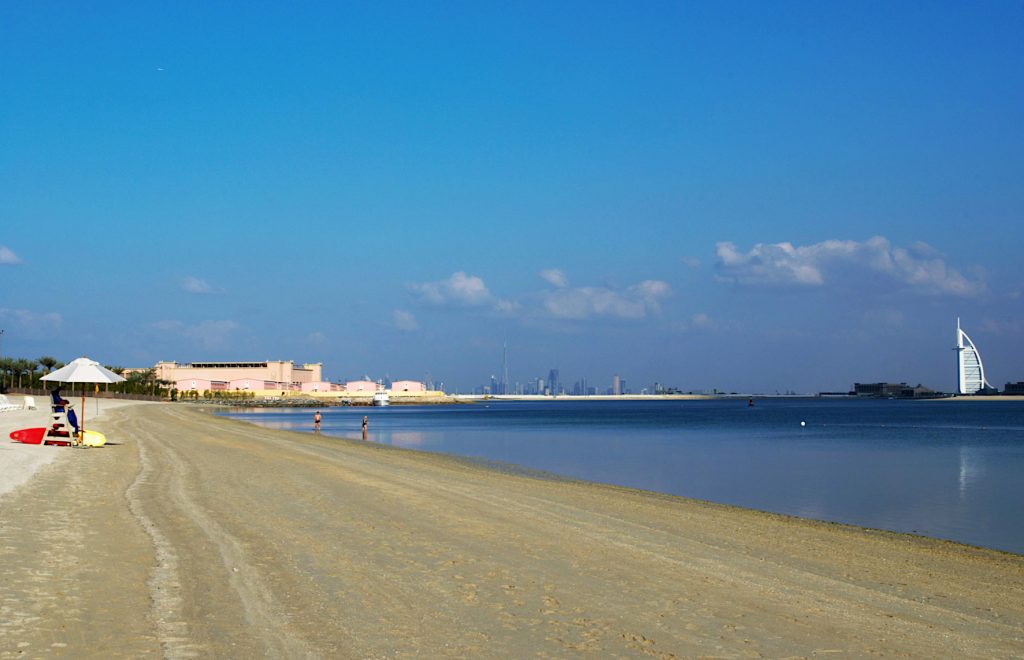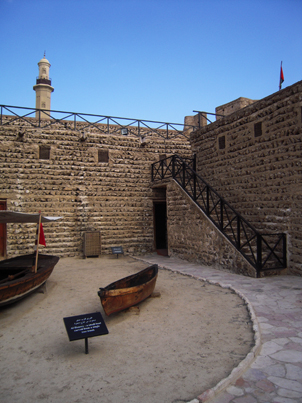
Dubai makes the rest of the world seem fake. That might seem like an odd thing to say, given that it’s usually regarded as being the other way round. After all, everybody knows that Dubai is the ultimate in fakery, a completely artificially-constructed glass-and-steel playground, ‘man-made’ in every glorious, jaw-dropping, common-sense-defying meaning of the phrase. It’s snow fields, shopping malls and water parks in the desert. An abomination of nature, a slap in the face of reality.
It’s not just the built environment either but also the sense that in this polyglot melting pot, there is no festival, no ritual, no national celebration (those things that seek to define us) that cannot be successfully transplanted to the desert and made to bloom again – especially if it involves money being spent and a commercial exchange between people.
In part, this may be because the Dubaians (the majority of whom come from India and Pakistan) are the most hospitable, polite and courteous people, ever-obliging and helpful. So you want Christmas in a spa resort with Thai finger food, vintage champagne and Belgian chocolates? No worries – that has nothing to do with who we are, the pleasure is all ours in making it happen.
But if everything can be transplanted and recreated in Dubai – with bells on – what does that say about the authenticity of the original? Wherein lies the difference that makes the original ‘authentic’ and the copy ‘fake’? Such distinctions are themselves inherently false. What Dubai shows us is that there is no authenticity, no ground zero of reality to which it refers and mimics. No matter how far back you go in time or how deep you mine a culture, you will never hit the bedrock of originality, merely layer upon layer of artifice.
Dubai knows this – it is built on sand after all – but rather than angst about it, it shows what wondrous constructions can be made to appear in spite of it all. Because of it. Anything that one might desire, in fact. That is the only reality.
Dubai is history on permanent fast-forward, the story of civilisation condensed into little more than a century. Just a few generations ago, it was a bucolic little pearling port, watching the stars, listening to the wind, building straw and mud huts to keep out the elements. Since then, it has accelerated through modernisation and industrialisation to arrive at the post-modern service economy in record time, a system built on money and speculation, tourism and shopping, real estate and a construction boom. Contrary to the perception of Dubai as an ‘oil-rich’ state, only about 5% of its GDP comes from oil and gas.
In the process, Dubai has become not so much a melting pot of cultures, a careful blend of traditions, but more like a Petri dish, an artificial environment for cultivating new colonies. Over 95% of the population was born outside the Emirate so there is a sense in which everybody shares an identity that belongs to no-one. For it to succeed, everybody must continue to believe in a collective dream which says that an economy built on endless day spas, gourmet theme nights and luxury escapes can be self-sustaining, a form of work in fact that generates its own wealth. So far it has succeeded, thanks to cheap labour and a belief in the power of escapism, but does it really have a long-term future? The thought is both scary and thrilling.
Dubai is a definitive statement about the supremacy of man over nature. Man-made, from the lowest sandbank island to the tallest skyscraper, is all-powerful here, unstoppable, exultant. Is there an environmental price to pay for such hubris? Does anybody give a damn? There seems to be little sense of the nagging guilt, the constant self-reproach of the contemporary Western industrialised mindset; all those centuries spent out in the desert have created a consciousness stripped bare, scoured by the sand and sun to leave no lingering tenderness for Mother Nature, no dewy-eyed remorse.
The museum in Dubai – part poetry, part propaganda – traces this history from desert to desserts, a saga that also retrospectively seeks to justify the existence of the current ruling family.
Perhaps the most surreal experience during our visit, in a place not lacking any number of mind-bending incongruities, was the sight of the near-naked, lightly-toasted overweight tourists lying slumped in rubber rings resembling giant hernia cushions (the humans in Wall-E come to mind as well) as they gently bobbed through the canals and ponds of the water park, watched over by lean, dark-skinned lifeguards trying not to look bored.
At certain parts where the water current runs too slowly, the tourists are man-handled – literally – in their rings and then lifted mechanically into the heart-pumping water rides, plunged into darkness, propelled down sheer drops and blasted by jets of water like some bizarre latter-day punishment for indolence.
What histories and cultural legacies are in play here: colonisation and its modern consequences, wealth and poverty, luxury and labour, pain and pleasure. The incongruity of the scene would be laughable (OK, it is laughable) except for the fact that, in Dubai, everything is allowable, if backed by cash or credit. What would be embarrassing elsewhere seems perfectly acceptable here in this fantasy land where no-one is judged for being indulgent or infantile.
